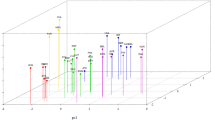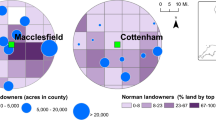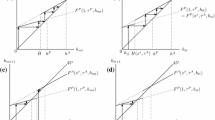Abstract
This essay analyzes the intrajurisdictional allocation of public resources by a governmental agency, using education as the example. The agency's decision is guided, in part, by the pReferences of voters within each subarea of the jurisdiction. Voter's choices are influenced by the likely allocation of additional resources resulting from passage of a tax levy, and the tax cost of the levy. After deriving predictions of the relationships between the variables of the model, we estimate a simultaneous equation system. Included are equations specifying the educational production function, voting decisions, and bureaucratic resource allocation. This essay also notes the biases present in prior studies that only considered the ‘demand side’ of voting models.
Similar content being viewed by others
References
Barkume, A. (1976). Identification of pReferences for election outcomes from aggregate voting data. Public Choice 27 (Fall): 41–58.
Cox, D. (1970). The analysis of binary data. London. Methuen and Co.
Deacon, R., and Shapiro, P. (1975). Private pReferences for collective goods revealed through voting on referenda. American Economic Review 65 (Dec.): 943–955.
Denzau, A., and MacKay, R. (1980). A model of benefit and tax share discrimination by a monopoly bureau. Journal of Public Economics 13: 341–368.
Hamilton, B. (1976). Capitalization of intrajurisdictional differences in local tax prices. American Economic Review 66 (Dec.): 743–753.
Haurin, D. (1982). Alternative models of voting behavior: A study of a property tax-public education levy. Unpublished manuscript, Ohio State University.
Hanushek, E. (1979). Conceptual and empirical issues in the estimation of educational production functions. Journal of Human Resources 14(3): 351–384.
Henderson, J.V., Mieszkowski, P., and Sauvageau, Y. (1978). Journal of Public Economics 10(1): 97–106.
Lovell, M. (1978). Spending for education: The exercise of public choice. Review of Economics and Statistics 60 (Nov.): 487–495.
Neufeld, J. (1978). Tax rate referenda and the property taxpayers' revolt. National Tax Journal 30(4): 441–456.
Romer, T., and Rosenthal, H. (1978). Political resource allocation, controlled agendas, and the status quo. Public Choice 33: 27–44.
Rubinfeld, D. (1977). Voting in a local school election: A micro analysis. Review of Economics and Statistics 59 (Feb.): 30–42.
Shapiro, P. (1974). A model of voting and the incidence of environmental policy. In H. Gottingen (Ed.), Systems, approaches and environmental problems. Vandenhoeck and Guprecht.
Author information
Authors and Affiliations
Additional information
We wish to thank the referees and Peter Aranson for many helpful comments and suggesting appropriate tests of the hypotheses.
Rights and permissions
About this article
Cite this article
Haurin, D.R., Gill, H.L. The spatial distribution of public services: A structural model of voting, educational production, and the government's allocation of educational inputs. Public Choice 44, 481–500 (1984). https://doi.org/10.1007/BF00119695
Issue Date:
DOI: https://doi.org/10.1007/BF00119695




